The Best White Cake Recipe {Ever}
This post may contain affiliate links. Please read my disclosure policy.
This White Cake recipe is the perfect cake for so many celebrations! This Best White Cake is simple to make and is a moist, tender cake everyone loves.

I got so many emails and comments asking for “The Best White Cake Recipe” after I shared my The Best Chocolate Cake Recipe {Ever}.
I began creating this white cake recipe by taking some ideas from the best of some of my favorite family cake recipes. The final cake recipe is decidedly white and perfect for a birthday cake, anniversaries, and even weddings.
It quickly became a family favorite cake recipe. My son declared it as “perfect,” and my brother-in-law says this has to be his birthday cake every year!
It’s definitely the Best White Cake I’ve ever tasted!
I think you’ll agree when you try it, too!
Why This Is The Best White Cake Recipe Ever!
This easy homemade white cake recipe is the perfect combination of fluffy, soft, moist, and flavorful!
- Amazing flavor. Full of buttery, vanilla flavor.
- Sturdy yet tender cake. It is so moist, with a tender stick to your fork crumb. It holds together beautifully, making slicing and serving a breeze.
- Versatile recipe. This cake recipe works well as a layer cake, cupcakes, sheet cake, or even as a bundt cake.
- Favorite cake. Always a favorite recipe! This recipe makes the best cake for special occasions and is easy enough for a weeknight dessert. It is loved for so many special celebrations such as birthdays and anniversaries, and it even makes a delicious wedding cake.
Best White Cake Recipe
Ingredients and Substitutions
To bake this cake, you’ll need these ingredients:
- butter – it is important to make sure that your butter is softened before you begin making this cake. You can use unsalted or salted butter in this recipe based on your preference.
- vegetable shortening – adds to the moisture and texture of this incredible cake.
- sugar – You’ll use granulated sugar
- eggs – While many white cake recipes use only egg whites, I decided after numerous rounds of testing that I preferred the flavor that the whole egg, including the egg yolks, lends to the cake. While the cake isn’t stark white, it is still white. Make sure to use large, room-temperature eggs before you begin.
- all-purpose flour – I use soft-winter-wheat-based all-purpose flour. In this instance, you can substitute with cake flour (or make your own cake flour with my easy tips!)
- baking powder
- salt – I use Diamond Crystal Kosher Salt. If you substitute with Morton’s Kosher salt, fine sea salt, or table salt, you will only need half the amount of the salt called for in the recipe.
- whole milk – make sure the milk is at room temperature
- buttermilk – room temperature
- vanilla extract – I prefer the flavor of vanilla in my cake and use 2 teaspoons of vanilla extract. If you like the flavor of almonds in your white cake, you can use 1 teaspoon of vanilla extract and 1 teaspoon of almond extract. This will reduce the vanilla flavor in the cake, but it is a good balance between the two. Additionally, if you want as white of a cake as possible, use a clear vanilla extract.
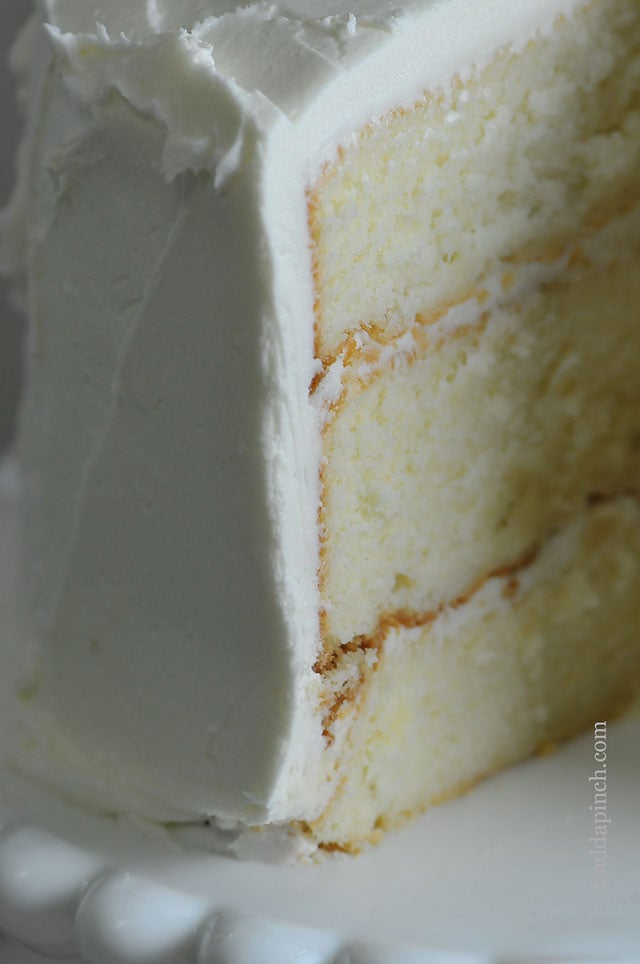
Step-By-Step Instructions
Preheat the oven. Begin by preheating the oven to 350º Fahrenheit.
Prepare cake pans. Prepare three 9-inch round cake pans with nonstick baking spray or coat well with shortening or butter and flour the pans, taking care to remove all excess flour.
Cream together the butter mixture. In a large mixing bowl (or the bowl of your stand mixer), cream together the butter and shortening until light and fluffy with an electric mixer. Slowly add sugar (one cup at a time) making sure to fully incorporate each cup before adding another. Mix together until light, fluffy, and white, about 4 minutes.
Next, add eggs (one at a time), making sure to fully incorporate each egg before adding another.
Whisk together the flour mixture. In another large mixing bowl, whisk together your add your dry ingredients (flour, baking powder, and salt).
Combine the milk mixture. Stir together the milk, buttermilk, and vanilla extract in a liquid measuring cup or mixing bowl.
Make the cake batter. Add a small amount of the dry ingredients (flour mixture) to the butter and shortening mixture, gently stirring after each addition. Then add a small amount of the milk mixture to the butter mixture and gently stir until just combined. Repeat alternating between adding small amounts of the dry mixture and the milk mixture to the butter mixture, just gently stirring until combined after the addition of each. Begin and end with the addition of the dry ingredients.
Final Stir and Scrape the Bowl. Gently stir all ingredients until well combined. Then, stop the mixer and scrape down the sides and bottom of the bowl, making sure that all ingredients are mixed well.
Distribute Cake Batter into Pans. Evenly distribute the cake batter between the three 9-inch cake pans and place the pans into the oven.
Bake the Cake. Bake for 25-30 minutes, or until a toothpick or cake tester inserted in the center comes out clean. Please don’t open and close the oven door a lot while the cake is baking, as the oven temperature drops each time the door is opened. You can follow my tips for how to tell when your cake is done.
Remove from Oven and Cool. Remove the cakes from the oven when done and allow them to cool slightly in cake pans for about 5 minutes. Then gently place the cake layers on a wire rack to finish cooling completely. This is important because cakes left in the cake pans for too long to cool may sweat, making it possible for them to stick to the pans.
Frost the Cake. Frost your cake with your preferred frosting.
White Cake Frosting Options
I used my fluffy white Vanilla Buttercream Frosting, which I doubled when I frosted the cake. It’s perfect on this cake, but you can use any favorite frosting.
Other Delicious Frostings
Strawberry Buttercream Frosting,
Perfect Chocolate Buttercream Frosting
Best White Cake Success Tips!
1. Follow the recipe. Follow my recipe instructions exactly for mixing the cake to ensure success and make it as white as possible.
2. Use room temperature ingredients. Butter, eggs, milk, and buttermilk all should be at room temperature to ensure the best mixing into the cake batter. This makes for the best texture and soft crumb of the finished cake.
3. Prepare the cake pans. Prepare your cake pans with nonstick baking spray or coat well with shortening or butter and flour, taking care to remove all excess flour.
4. Mix the cake batter well but not too much. Cream the butter, shortening, and sugar until light and fluffy, about 3 to 5 minutes. Don’t overbeat when adding eggs and other ingredients. Just mix gently until incorporated well into the batter.
5. Cool the cake layers. Make sure you let the cake layers cool slightly for 5 minutes before removing the cake layers to a wire rack to cool completely. Set a timer!
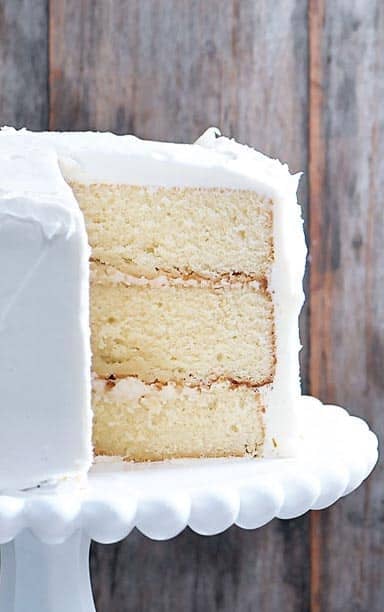
How to Store and Freeze this Cake
To store. Store leftover cake at room temperature under a cake dome or covered with wrap for up to 3 days. Storing in the refrigerator tends to result in a dry cake.
To freeze. Let the cake layers cool completely. Wrap them well with plastic wrap and then with foil. Put each layer into a freezer bag and freeze for up to 2 months.
To serve from frozen. Allow the cake layers to thaw in the refrigerator overnight. The next day, the layers are ready to fill and frost as desired.
The next time you need a white cake recipe, give this one a try. I think you’ll love it!
Here’s my White Cake Recipe. My family calls it the best ever.
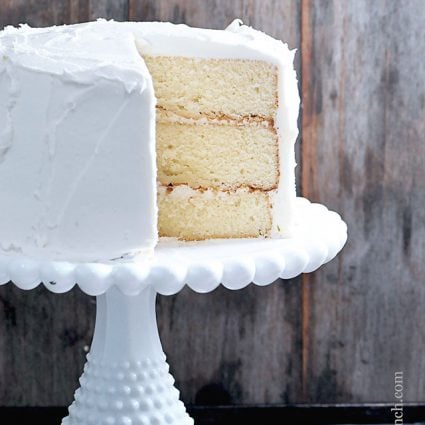
The Best White Cake Recipe {ever}
Equipment
Ingredients
- 1 cup (226 g) butter , softened
- 1/2 cup (92 g) shortening
- 3 cups (594 g) granulated sugar
- 5 large (250 g) eggs, room temperature
- 3 cups (360 g) all-purpose flour
- 2 teaspoons (8 g) baking powder
- 1/4 teaspoon (0.7 g) kosher salt
- 1/2 cup (113.5 g) whole milk, room temperature
- 1/2 cup (113.5 g) buttermilk, room temperature
- 2 teaspoons (9.4 g) vanilla extract
Instructions
- Prep. Preheat oven to 350º F. Prepare three 9-inch round cake pans with nonstick baking spray, brush with homemade cake goop (pan release), or coated well with shortening or butter and floured, taking care to remove all excess flour.
- Cream together butter mixture. Cream together butter, shortening and sugar until light and fluffy with an electric mixer. Mix together for 4 minutes until light, fluffy and white. Add eggs one at a time, making sure to fully incorporate each egg before adding another.
- Whisk together the flour mixture. Whisk together the flour, baking powder, and salt in a mixing bowl.
- Combine the milk mixture. Stir together the milk, buttermilk, and vanilla extract in a liquid measuring cup or bowl.
- Make the cake batter. Alternately add the flour mixture and the milk mixture to the butter mixture, beginning and ending with the flour mixture. Make sure to mix just until combined to prevent overmixing. Stop the mixer and scrape down the sides and the bottom of the bowl, making sure to have all ingredietns mixed well into the cake batter.
- Bake and cool the cake. Evenly distribute cake batter between cake pans and place pans into oven. Bake for 25-30 minutes, or until a toothpick or cake tester inserted in the center comes out clean. Remove and allow to cool slightly in cake pans for about 5 minutes, then cool completely on a wire rack.
- Frost and serve. Frost the cake as desired.
Notes
Best White Cake Recipe Success Tips!
1. Follow the recipe. Follow my recipe instructions exactly for mixing the cake to ensure success and make it as white as possible. 2. Use room temperature ingredients. Butter, eggs, milk, and buttermilk all should be at room temperature to ensure the best mixing into the cake batter. This makes for the best texture and soft crumb of the finished cake. 3. Prepare the cake pans. Prepare your cake pans with nonstick baking spray or coat well with shortening or butter and flour, taking care to remove all excess flour. 4. Mix the cake batter well but not too much. Cream the butter, shortening, and sugar until light and fluffy, about 3 to 5 minutes. Don’t overbeat when adding eggs and other ingredients. Just mix gently until incorporated well into the batter. 5. Cool the cake layers. Make sure you let the cake layers cool slightly for 5 minutes before removing the cake layers to a wire rack to cool completely. Set a timer!How to Store and Freeze this Cake
Make Ahead. This cake can easily be made ahead of serving. Bake and frost as desired and store at room temperature (or in the refrigerator based on the frosting used) under a cake dome or covered with wrap for up to 3 days. To store. Store leftover cake at room temperature (or in the refrigerator based on the frosting used) under a cake dome or covered with wrap for up to 3 days. To freeze. Let the cake layers cool completely. Wrap them well with plastic wrap and then with foil. Put each layer into a freezer bag and freeze for up to 2 months. Allow the cake layers to thaw in the refrigerator overnight. The next day, the layers are ready to fill and frost as desired.General Recipe Notes:
- Cupcakes. This recipe makes approximately 24 cupcakes when the cupcake tin is filled more than 3/4 full. When filled 1/2 full, this recipe makes approximately 36 cupcakes. Bake for approximately 18 minutes.
- Original recipe. If you preferred the original white cake recipe (published in 2013), it used 1/2 teaspoon baking powder and 1 cup buttermilk with no whole milk.
- High Altitude. If you live in a high-altitude environment, you’ll need to make sure to follow recommended baking adjustments for your altitude.
Nutrition
Nutrition information is automatically calculated, so should only be used as an approximation.
Comment from a Pastry Chef
I shared this comment from The Pastry Life, comment #1062 to this area of the post as it might be helpful to you as you bake this cake.
“Hi there, I am a pastry chef and have lots of knowledge of cakes, and why they do the funny things that they do. Let me start of by saying this cake is delicious, moist and fluffy! This is thanks to the seemingly large amount of sugar and fats, so do not reduce the amounts or make substitutions! If you’re that concerned about the healthiness of this cake, you should probably just avoid it.
This cake does not rise much, but that does not negatively affect its fluffiness. I followed the directions exactly, except for one very important step which I believe is why my cake is so fluffy inside and did not sink. Cream your butter, shortening and sugar altogether until very white and fluffy (about 4 minutes). After that, follow the instructions to a T. If you over beat after adding the eggs, they will produce a tougher cake. Take extra care while rotating pans as to not deflate the cakes, and resist the urge to open your oven door to peek except when you need to rotate.
This cake does form a bit of a crust on top from the high egg and sugar content, which makes it more difficult to tell when it is done. Your best hint is your nose. If you can smell cake, then check it! If its not jiggly, take it out and scoop a little bit out of the middle to see if it’s done (you’re gonna cover it with frosting anyway). Don’t trust the toothpick-test!
Sorry for writing a novel, I just know how hard it is to make a great white cake and this recipe is probably the best I’ve had yet, so it made me sad to see how many people were disappointed by it due to their lack of pastry knowledge and proper method.”
Thanks for your detailed comment, The Pastry Life!
Here’s to good cake! Enjoy!
Robyn xo

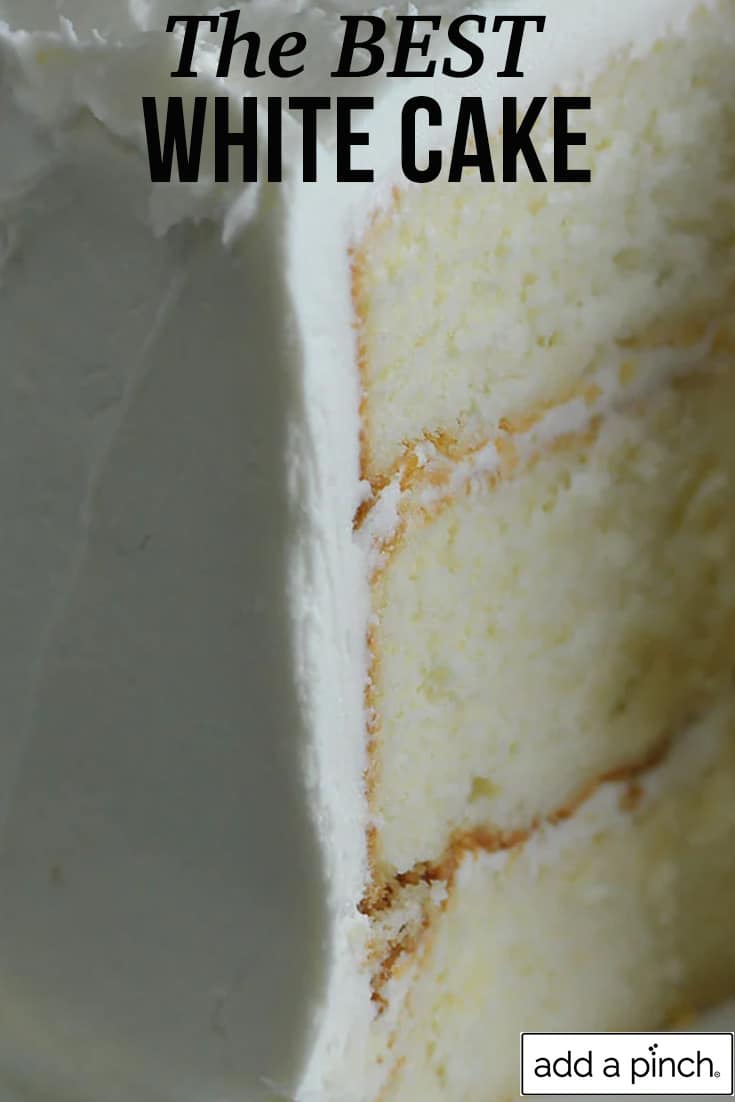
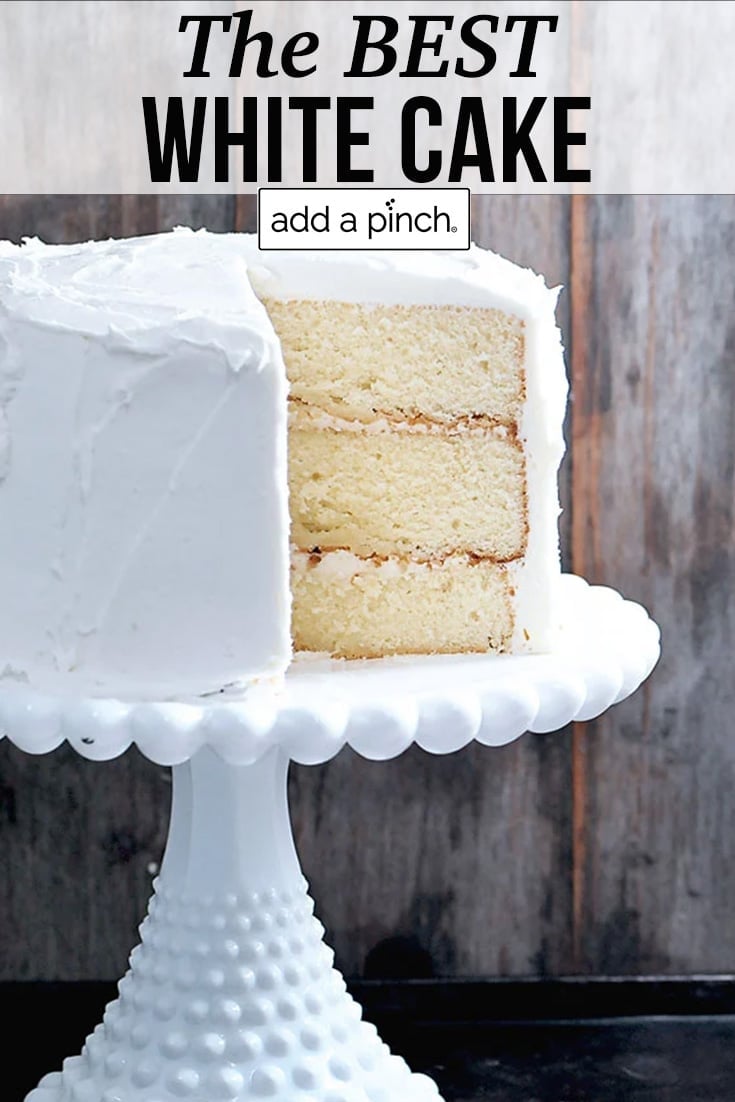
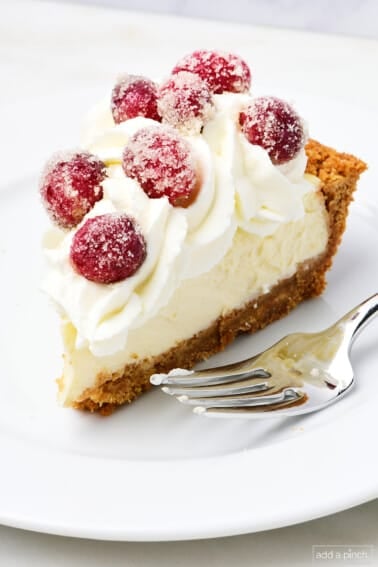



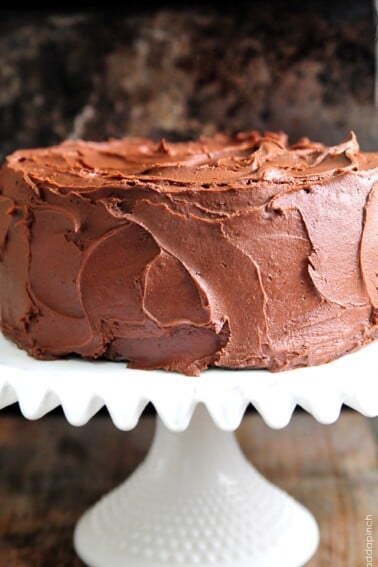
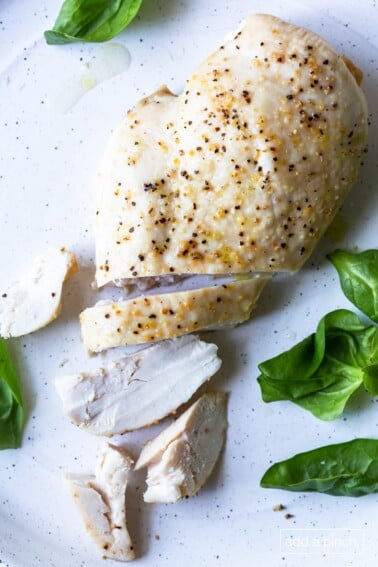
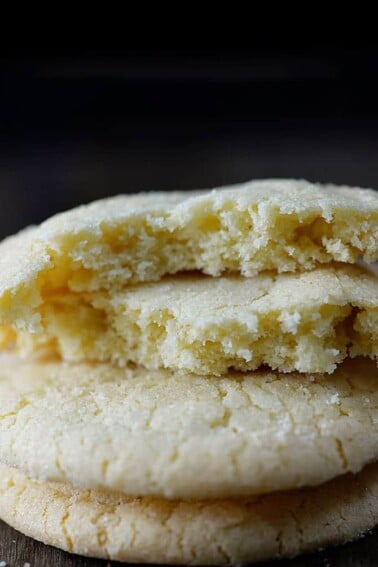

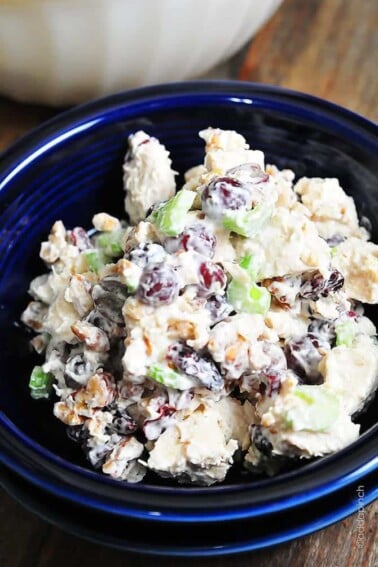








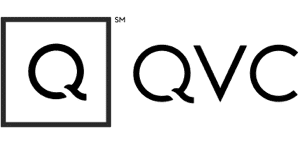

Sorry I meant whiter not lighter lol
Another commenter mentioned that she added a bit of blue coloring to the batter. You might want to look through previous comments to find the specifics. Hope that helps some!
The ONLY cake recipe I use now after searching and testing many many recipes, however instead of granulated sugar I use caster personal preference 🙂 I would like to ask though to get my batter just a bit lighter do you reckon it would be ok to remove some if not all of the egg yolks?
Thanks again for this fab recipe x
Hi Dawn,
When I tested this cake without egg yolks, I personally did not like the flavor as much. Hope that helps!
I was planning on making this as a rainbow cake for my daughters birthday. We can’t get shortening here. Are there any other changes you’d recommend if using entirely butter.
I am planning on going with the original with 1 cup buttermilk and 1/2 or 1 tsp of baking powder.
Thanks!
For those interested this cake turned out very nicely with 1 1/2 cups of butter, 1 cup of buttermilk and approx 2 tsp baking powder. Will be my go to vanilla cake from now on I think. Great recipe.
Hi! I’m anxious to try your recipe. It sounds great! I saw you said it bakes about 24 cupcakes. Would it bake two 8″ rounds as well then? I have a wedding cake coming up and am trying to figure out the cost of ingredients. My customer also wants everything to be organic (yikes!) I’m not familiar with organic ingredients, but am hoping (and praying) it doesn’t effect the quality. Any experience with this? Thanks for any advice you have!
Always looking for a better white cake recipe! I can tell from your photos that this one is a winner. I cannot wait to give it a try!
Robyn: I used the new recipe (with 2 tsp baking powder), but with cake flour, 1/4 C whole milk + 3/4 C buttermilk (seemed to me more buttermilk was better than less for moisture). I don’t much care for the looks of my product–that is, certainly can’t call them “perfect.” They are sort of uneven, and there’s and a little crusty ridge formed and browned around the top edges. They didn’t rise up a whole lot, but they did rise. My batter was pretty thick…it would be a “scoop” batter thickness (which I did, using a 1 C measure to divide)rather than a “pour” batter, which is what I mean by ‘pretty thick.’ Is that the expected batter consistency? I can say I love the flavor of the batter, and of the crumbs I scored from the pan sides. Should I have avoided the cake flour? Try the original version? Would like these layers to come out a little more uniformly…and look better, as these cakes are for a big wedding weekend party. Thanks.
Robyn: Second attempt, I’ve used your original recipe, again using cake flour rather than all purpose. 1/2 tsp baking powder, 1 C buttermilk, low speed baking. Yield = 3 flat layers, each measuring exactly 1/2″ thickness. Didn’t really rise at mall. This did eliminate what you’ve labeled the “meringue-like” (I called it crusty) edges and top. In short, my layers look to be about HALF as thick as the lovely layers pictured for this recipe. First attempt rose only slightly more. While I like the looks/feel of this second batch on the surface, I think the only way to use this for a decent layer cake is to bake a second batch and stack six 1/2″ layers.
Sorry it wasn’t to your liking, Pam. I wouldn’t recommend substituting cake flour in place of the all-purpose flour as they have different percentages of protein in them, which will give you a different result.
Hi!
I want to make this cake at the weekend but i’m thinking of adding sprinkles to the mixture to make a funfetti cake? Would this affect the moisture?
Also, why do you use granulated sugar instead of caster sugar?
Thanks!
Oh yes sorry I meant to say baking powder! Ok, great tip about the mixing I will try that, baking is such a science which is kind of why I love it but so different from cooking where you can just throw in whatever and stir whatever way you like. I’ll let you know how it goes (also going to try and tint part of the batter blue with dye made from red cabbage to swirl into the final cake, haha, I know crazy!)
I want to make this for my husbands birthday Monday, what kind of butter do you use? Regular store brand or something fancier?
Hi Vesta,
I generally use Land O’ Lakes or KerryGold butter, especially for baking. Happy birthday to your husband!!!
oh these are great tips thanks! Yah, I think that this is definitely a better layer cake than cupcake – ok so maybe the buttermilk was the issue here, didn’t even think about that in terms of a reaction with the baking soda. It did taste good it just didn’t look so hot and the cake had the crunchy, quite buttery top. So do you think I didn’t sift the baking soda properly into the flour? Or do you mean I didn’t incorporate it into the wet mixture right? I really appreciate these tips, I’m on the hunt for the perfect white cake for my daughter’s first birthday and this was a test run, so I’ll try again!
I’m glad they help! Just to clarify, this recipe uses baking powder and not baking soda. The 1/2 cup buttermilk makes the cake batter a bit more acidic which does help with flavor and other things. When you remake it, maybe slow the mixer speed to a lower speed, even to the point of stirring, once the eggs are added to the batter. I think what is happening is that it is developing a bit of a meringue type crust on the cake. That should eliminate the problem. You’ll just want to make sure the dry ingredients are incorporated into the wet ingredients really well, but gently. Let me know if you have any more questions. Happy first birthday to your baby girl!!!